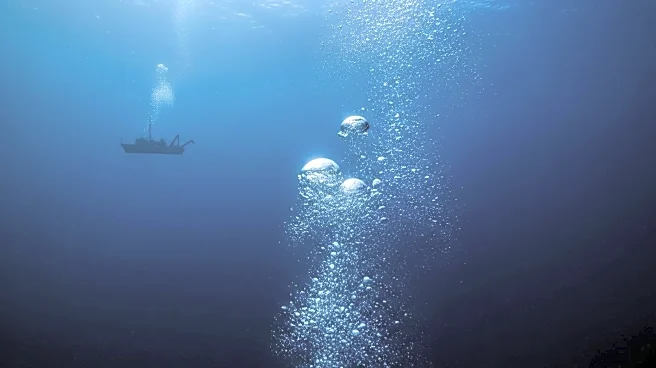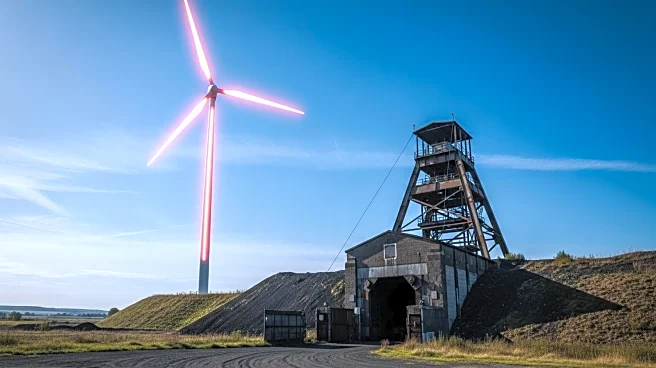What's Happening?
The Redwing, a robotic underwater glider developed by Teledyne Marine and Rutgers University, is set to circumnavigate the globe, following Ferdinand Magellan's historic route. Launching from Martha’s Vineyard, Massachusetts, the glider will travel for five years, collecting data on ocean currents and sea temperatures. Unlike traditional submarines, Redwing uses a buoyancy engine to glide through the water, minimizing energy use. The mission aims to provide valuable insights into climate change and oceanic conditions, with data shared globally to enhance scientific understanding.
Why It's Important?
The Redwing's mission is crucial for advancing oceanographic research, offering a cost-effective method to gather extensive data without the need for support ships. This initiative could significantly contribute to understanding climate change impacts, ocean currents, and temperature variations. The data collected will be vital for researchers, policymakers, and environmentalists, aiding in the development of strategies to address global environmental challenges. The mission also highlights the potential of robotic technology in scientific exploration, paving the way for future innovations.
What's Next?
As Redwing embarks on its journey, researchers will monitor its progress and adjust its path to ensure successful data collection. The mission may face challenges such as biofouling, fishing nets, and shipping lanes, requiring careful navigation and maintenance. The glider's findings will be analyzed and shared with academic institutions, potentially influencing future research and environmental policies. The success of this mission could inspire similar projects, utilizing robotic technology to explore and understand remote oceanic regions.
Beyond the Headlines
The Redwing's mission underscores the growing importance of autonomous technology in scientific research. It raises questions about the ethical implications of using robots in natural environments and the potential impact on marine life. The initiative also highlights the need for international collaboration in addressing global environmental issues, as data from the mission will be shared worldwide. As technology continues to evolve, the role of robotics in environmental conservation and research is likely to expand, offering new opportunities and challenges.












